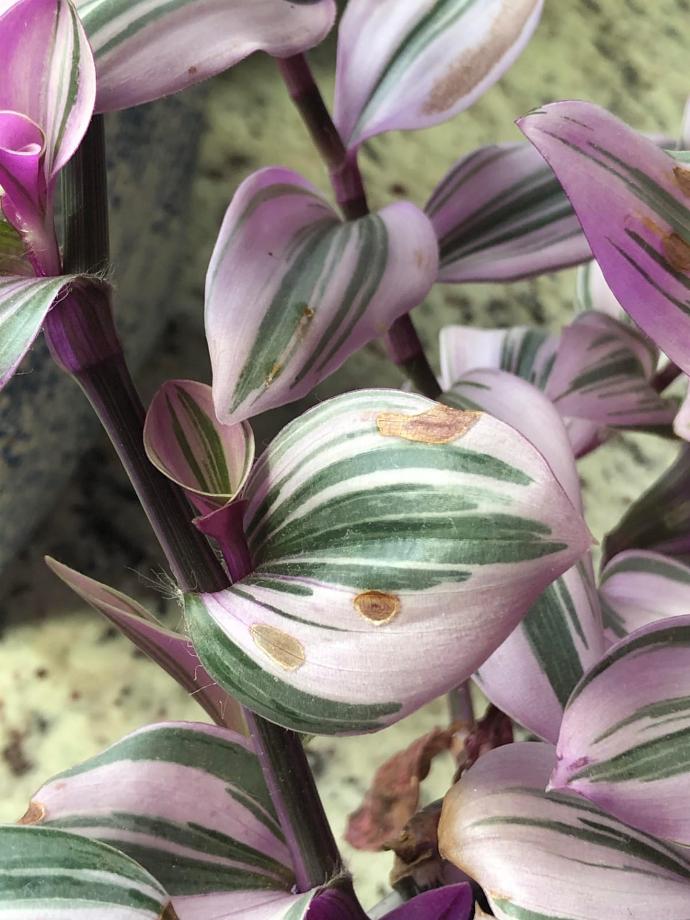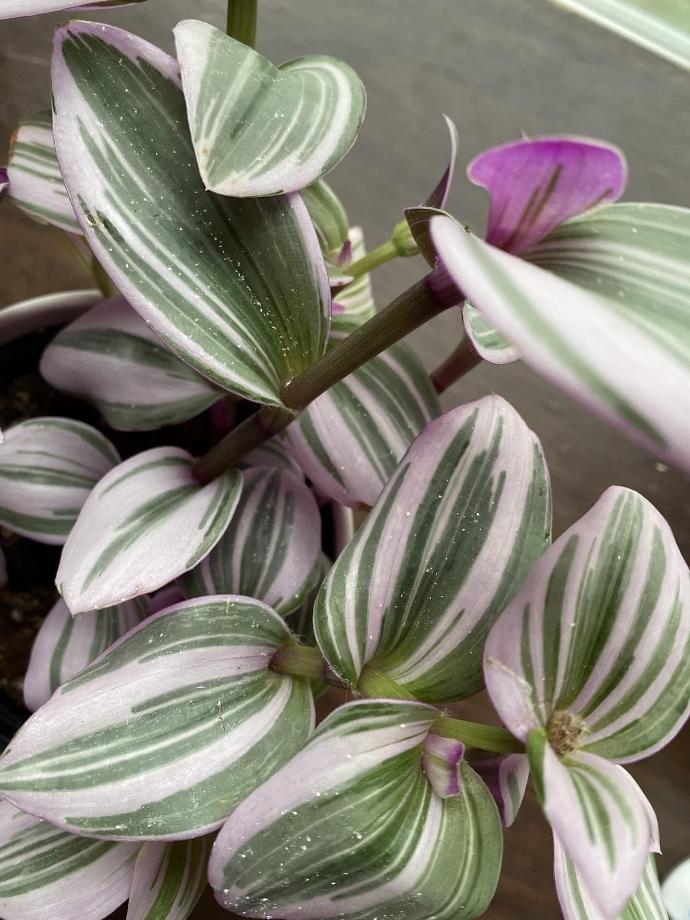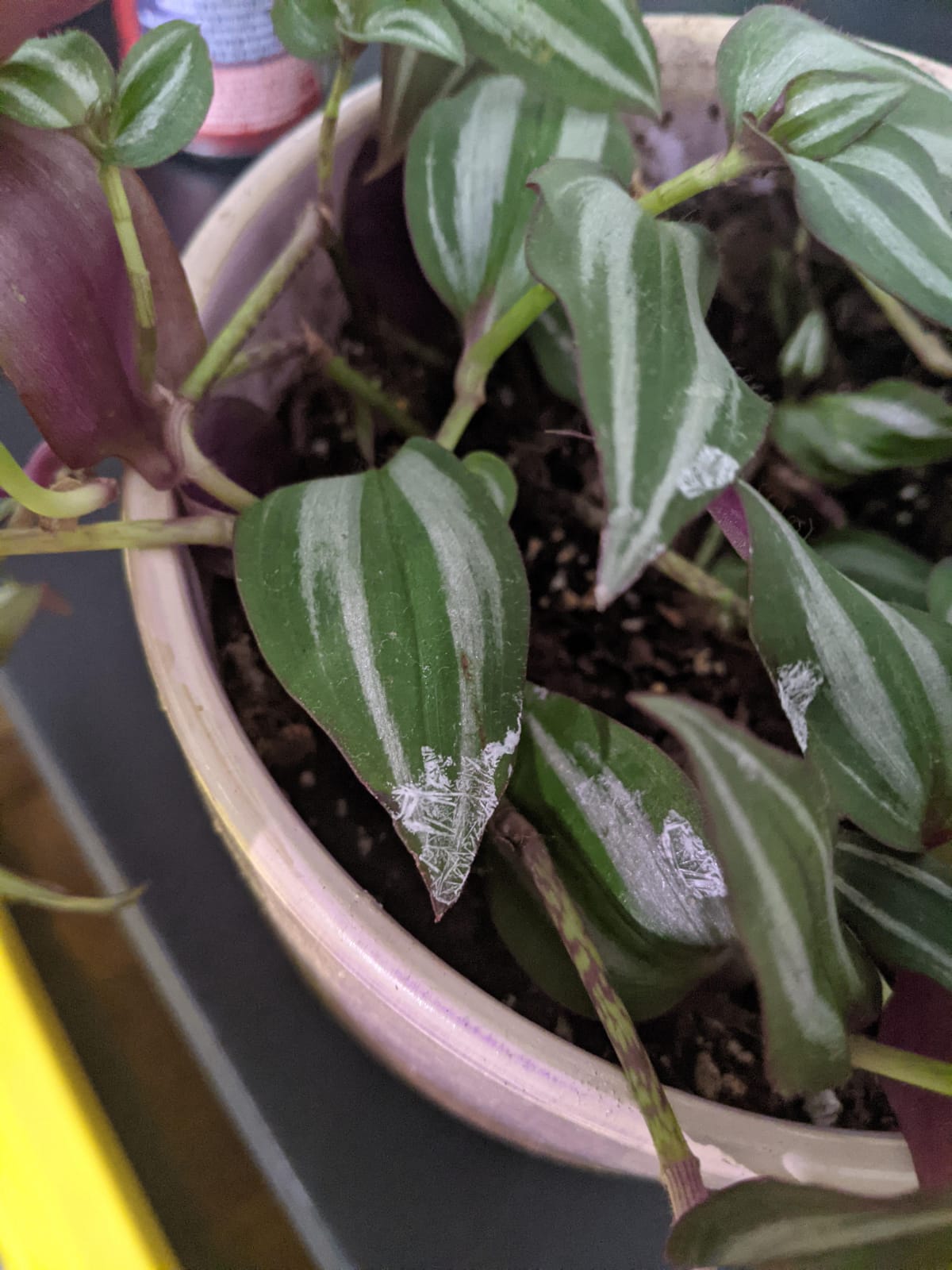Wandering Jew Plant
Wandering Jew (Tradescantia zebrina), also known as Inch Plant, is a trailing plant often grown in hanging baskets. Plant in well-draining soil and provide bright, indirect light. Allow the soil to partially dry between waterings. Pruning can be done to control the length and promote a fuller appearance.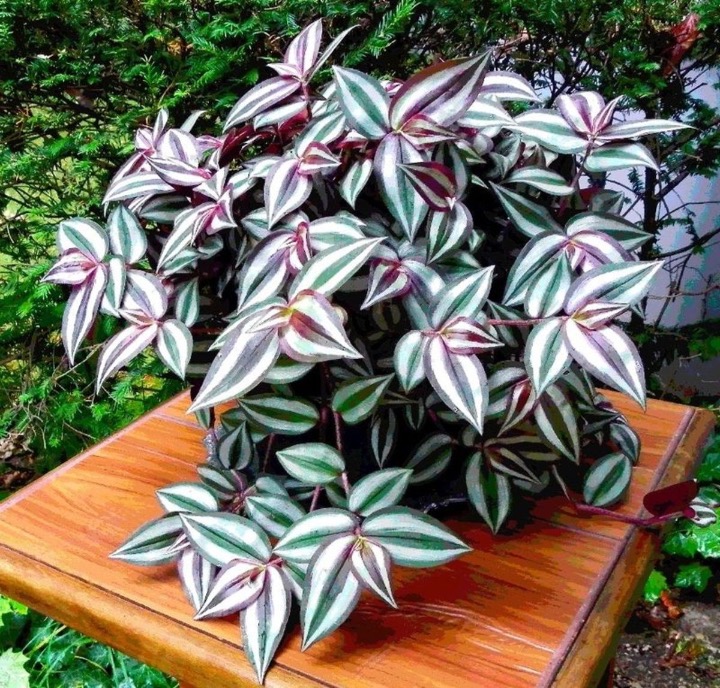
Habit
Climber
Height
0.3 to 0.5 m
Growth
Fast
Soil
Well-drained, Loamy
Shade
Low to bright light
Moisture
Moist
Edible
No
Medicinal
No
Origin
North America
Climatic Condition
Tropical, Subtropical
Temperature (°)
20°C to 30°C
Humidity (%)
60% to 80%
Potting media
50% Loam, 40% Sand, 10% Compost
Fertilizers
Organic Fertilizer
Watering
Regular watering
Plant Weight
0.2 to 0.5 kg
Flowering Time
Spring to Fall
Soil Ph level
6.0 to 7.5
Water Ph level
6.0 to 7.0
Soil EC
0.5 to 0.7 mS/cm
Yield Per Plant
2 to 3 kg per plant
NPK ratio
10:10:10
life Span
2 to 3 years
Health Benefits
Ornamental, Air-purifying
Suggested Grow Media or Potting Mix ?
50% peat moss, 30% perlite, 20% compost
Suggested Fertigation/Fertilizers
Fertilize every 2 weeks with a balanced, water-soluble fertilizer.
Common Diseases and Remedies
Leaf spot, Powdery mildew , Botrytis , Root rot.
Roots get mushy and smelly, White powder appears on the upper side of the leaf.
Locate plants in sunny areas as much as possible, provide good air circulation, and avoid excess fertilizing or use a slow-release fertilizer.
Thiram or benomyl can be sprayed . Cinnamon fungicide can be sprayed 2-3 applications in 15days interval.
HEALTH BENEFITS
1. May help reduce inflammation: Wandering jew's antioxidants and other compounds may help reduce inflammation and improve overall health.
2. May have antimicrobial properties: Wandering jew may have antimicrobial properties that can help prevent infections.
3. May help improve respiratory health: Wandering jew's antioxidants and other compounds may also help improve respiratory health
What Is A Wandering Jew Plant?
The wandering gem plant, also known as conifer or spiderwort, is a hardy, fast-growing, and easy-care plant. Wandering Jew plant has heart-shaped leaves with thick purple and silver lines. Wandering Jew Plant is his one of the most powerful indoor air purification plants. It grows vigorously with little care and does best in bright, indirect sunlight.

What Are The Different Types of Wandering Jew plants ?
1. Tradescantia fluminensis:-
Also known as wandering willow, this perennial herb has white flowers and alternate leaves.
2.Tradescantia pallida 'Purple Heart':-
This variety has tall, pointed leaves that grow up to 7 inches long. The tip of the leaf remains red or green, but the rest of the leaf turns purple.
3.Tradescantia zebrina:-
This species is a creeping plant and is also known as the silver tongue plant.

How do you care for Wandering Jew Plant?
1.Location:-
The ideal location to grow the Wandering Jew plant indoors is in an east or west facing window. Even a few hours of direct sunlight is fine.
2.Sunshine:-
Keep the Wandering Jew in a warm location with plenty of bright, indirect sunlight. If the plant does not receive enough light, the leaves will wither.
3.Soil:-
The Wandering Jew plant can grow in any soil, but it grows best in soil with more organic matter.
4.Hydration:-
Keep soil moist but not waterlogged. Water once or twice a week. Water sparingly in winter.
 5. Nourishment:-
5. Nourishment:-
This plant does not require fertilization, but occasional fertilization is beneficial to the plant. Fertilize from spring to summer.
6. Issues:-
Dryness Overwatering Lack of Light
What Are The Benefits of Wandering Jew Plant?
Antioxidant, antibacterial and anticancer properties: The Wandering Jew plant has the following important pharmacological effects. Antioxidant, antibacterial, antitrypanosomal, antiarrhythmic, and larvicidal effects. Migratory Jewish plants filter toxins such as formaldehyde, benzene, and xylene, improving indoor air quality. Wandering Jew plant has many medicinal uses, including treatment of colds, hypertension, tuberculosis, uterine diseases, blood purification, and treatment of amenorrhea when combined with other herbs.
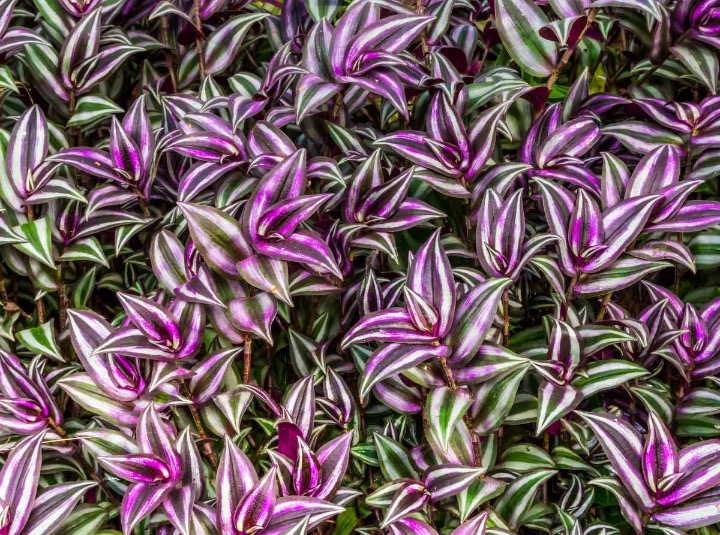 FAQ's About Growing Wandering Jew Plants
FAQ's About Growing Wandering Jew Plants
1. How often should I water the Wandering Jew?
Wandering Jews prefer slightly damp conditions. Therefore, be sure to water as soon as the top of the soil feels dry.
2. How much sun does the Wandering Jew need?
The Wandering Jew thrives in bright but indirect sunlight.
3. How do you fertilize your hiking gems?
You can feed your Wandering Jew plant with a balanced houseplant fertilizer every 15 days.
4. How can I make Wandering Jew grow faster?
F. Wandering Jew can be planted in regular houseplant potting soil, but it grows even better in soil with more organic matter.
5. What is the best fertilizer for a wandering Jew?
Apply liquid fertilizer diluted in half with 10-10-10 once every two weeks from spring to autumn.
